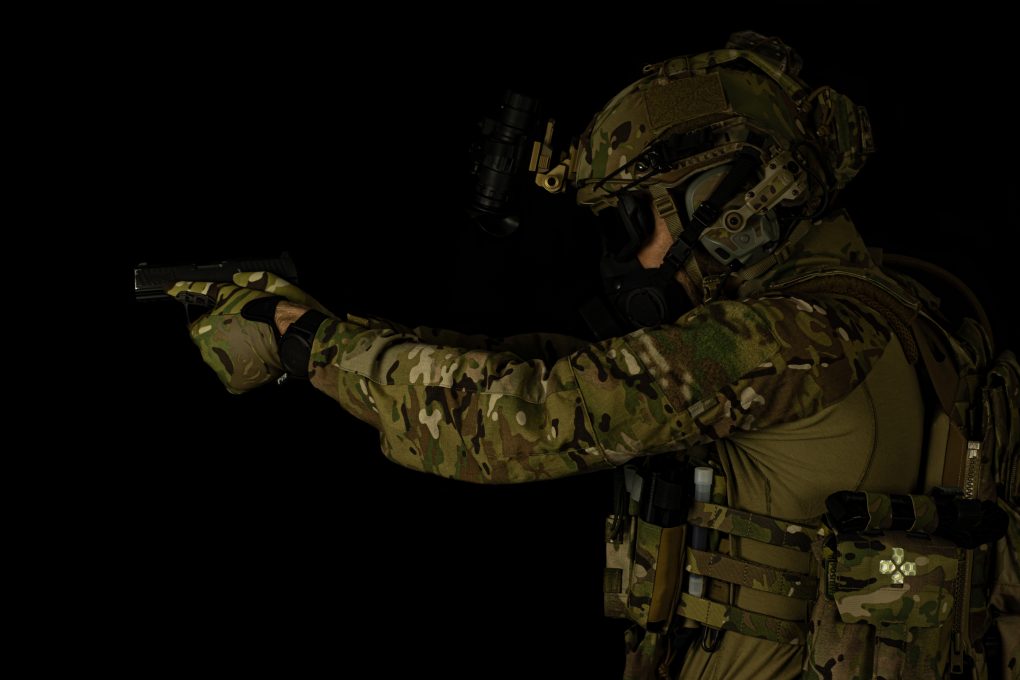If you’re deciding between an Ops-Core Bump Helmet and a Ballistic Helmet, it’s important to understand their key differences. Compare factors like protection level, weight, comfort, and price to determine which suits your needs best, whether for military, law enforcement, or recreational use. Make an informed decision based on your specific requirements.
What Are Ops Core Bump Helmets?
Ops-Core Bump Helmets are versatile protective headgear designed for various operational needs. They offer a combination of impact resistance, comfort, and durability, meeting strict testing standards to ensure user safety. Crafted from advanced materials like high-density polymers, they balance lightweight design with robust protection.
Their sleek design includes ventilation systems for airflow during extended wear. Compatible with accessories such as NVG mounts and communication systems, these helmets are suitable for tactical operations, rescue missions, and training exercises, providing reliable protection against impact and blunt force trauma.
What Are Ballistic Helmets?
Ballistic Helmets are specialized protective gear primarily designed to defend against ballistic threats, commonly utilized in military and law enforcement contexts. They prioritize ballistic resistance while maintaining weight, comfort, and durability considerations. Constructed with layers of robust materials such as aramid fibers or polyethylene, these helmets offer superior defense against bullets, shrapnel, and other projectiles.
Engineered with advanced ergonomic features, they ensure proper weight distribution, minimizing fatigue during extended wear. Their modular design allows customization based on required protection levels, with options for attaching accessories like night vision goggles or communication devices.
What Are the Differences Between Ops Core Bump Helmets and Ballistic Helmets?
The primary distinctions between Ops Core Bump Helmets and Ballistic Helmets are their focus on protection level, weight, comfort, and material composition. Ops Core Bump Helmets prioritize impact resistance and ventilation, whereas Ballistic Helmets excel in ballistic capabilities and communication integration. Ballistic Helmets offer higher levels of ballistic resistance due to specialized construction, while Ops Core Bump Helmets focus on impact protection.
Ops-Core Bump Helmets are generally lighter and ideal for extended wear, while Ballistic Helmets provide added comfort with padding and suspension systems. The material composition differs, with Ballistic Helmets made of bulletproof materials and Ops-Core Bump Helmets featuring lighter, durable materials suitable for non-ballistic threats.
Protection Level: The effectiveness of helmets like Ops Core Bump Helmets and Ballistic Helmets heavily relies on their protection level, assessed through standardized testing protocols by organizations like NIJ, ANSI, and OSHA. These tests ensure helmets meet impact resistance, penetration protection, and overall durability criteria. Certifications from bodies like NIJ indicate compliance with rigorous ballistic standards, assuring users of reliability under adverse conditions.
Weight: Helmet weight is critical for user comfort, mobility, and usability. Helmets that balance lightweight design with protective capabilities are preferred for extended wear. Excessive weight can lead to fatigue and reduced endurance, while overly lightweight helmets may compromise impact protection. Proper weight distribution within helmets prevents strain, enhances maneuverability, and reduces the risk of neck injuries.
Comfort and Mobility: Optimal comfort and mobility in helmets, such as Ops Core Bump and Ballistic Helmets, are vital for user satisfaction and operational effectiveness. Features like ventilation systems and suspension mechanisms contribute to enhanced comfort levels. Ventilation systems maintain airflow, preventing overheating, while suspension mechanisms distribute impact forces evenly, reducing strain on the head and neck.
Price: The cost of helmets varies based on material quality, customization options, and brand reputation. While higher prices may suggest better features, they don’t always guarantee superior protection. Users should assess their specific needs to avoid overpaying for unnecessary features. Alternatively, choosing reputable brands known for quality and affordability can strike the right balance.
Which One is Better for Different Situations?
Choosing between Ops Core Bump Helmets and Ballistic Helmets depends on the specific requirements of scenarios like military operations, law enforcement duties, or recreational activities. Ops-Core Bump Helmets are ideal for lighter activities where impact protection is necessary without the extra weight, such as training exercises and airsoft games, prioritizing comfort and versatility. In contrast, Ballistic Helmets offer advanced protection against ballistic threats crucial for military and law enforcement personnel operating in high-risk environments. Factors like ballistic protection, weight distribution, compatibility with accessories, communication integration, and comfort play vital roles in determining the most suitable helmet for each situation.
How to Choose the Right Helmet for Your Needs?
Selecting the right helmet involves assessing factors like purpose, protection level, comfort, and budget. Identifying the intended use, whether for military, law enforcement, or recreational activities, sets the groundwork for choosing features like ballistic protection or comfort. Evaluating protection levels through certifications like CPSC or DOT ensures adequate safety standards. Comfort and mobility, facilitated by features such as suspension systems and ventilation, enhance wearability. Setting a budget helps balance costs with quality and desired features, ensuring a reliable helmet within financial constraints. By considering these elements, you can make an informed decision tailored to your specific requirements.
Frequently Asked Questions
What is the difference between Ops Core Bump Helmets and Ballistic Helmets?
Ops-Core Bump Helmets are designed for impact and bump protection, while ballistic helmets are intended for projectile and fragmentation protection.
Which helmet is better for tactical operations?
This depends on the operation’s specific needs. Ops-Core Bump Helmets are lighter and more comfortable for extended wear, while ballistic helmets offer higher levels of protection.
Can Ops Core Bump Helmets be used for ballistic protection?
No, Ops-Core Bump Helmets are not designed to provide ballistic protection. They should only be used for impact and bump protection.
Are ballistic helmets more expensive than Ops Core Bump Helmets?
In general, ballistic helmets tend to be more expensive due to the materials and technology used to provide high levels of protection. However, the cost may vary depending on the specific brand and features.
Which helmet is more commonly used by military and law enforcement personnel?
Military and law enforcement personnel commonly use both Ops Core Bump Helmets and ballistic helmets. The choice often depends on the specific mission and level of protection needed.
Can Ops Core Bump Helmets and ballistic helmets be used interchangeably?
No, these helmets serve different purposes and are not interchangeable. It is important to use the appropriate helmet for the intended level of protection needed.


